2 Common Mobility Training Mistakes
2020-01-26
This past Saturday started my “teaching season” where I get to not only present, but also learn at some awesome conferences. Being around great coaches, hearing fascinating ideas, and being challenged to think differently are all things I greatly appreciate. Sometimes the best parts are just finding how other professionals communicate similar messages in ways that I learn to be more effective. The Perform Better 1-Day in San Francisco was a great example. Being around coaches like Lee Burton and Martin Rooney is fantastic, I especially have a great affinity for hearing how Lee presents concepts of movement.
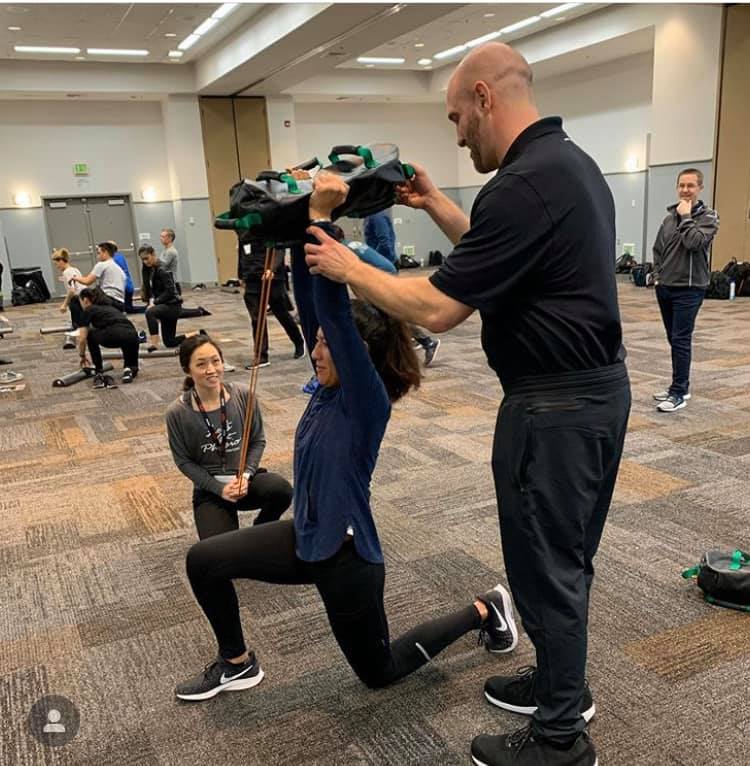
If you aren’t familiar with Lee, he is the co-creator of the Functional Movement Screen and a university professor. So you know you are smart to listen to what he offers. The topic of mobility training came up and I think Lee did an outstanding job of making complex subjects very digestible. For one, it is hard to discuss mobility training without knowing what mobility really means. We often use terms like flexibility and mobility interchangeably but they are actually quite different.
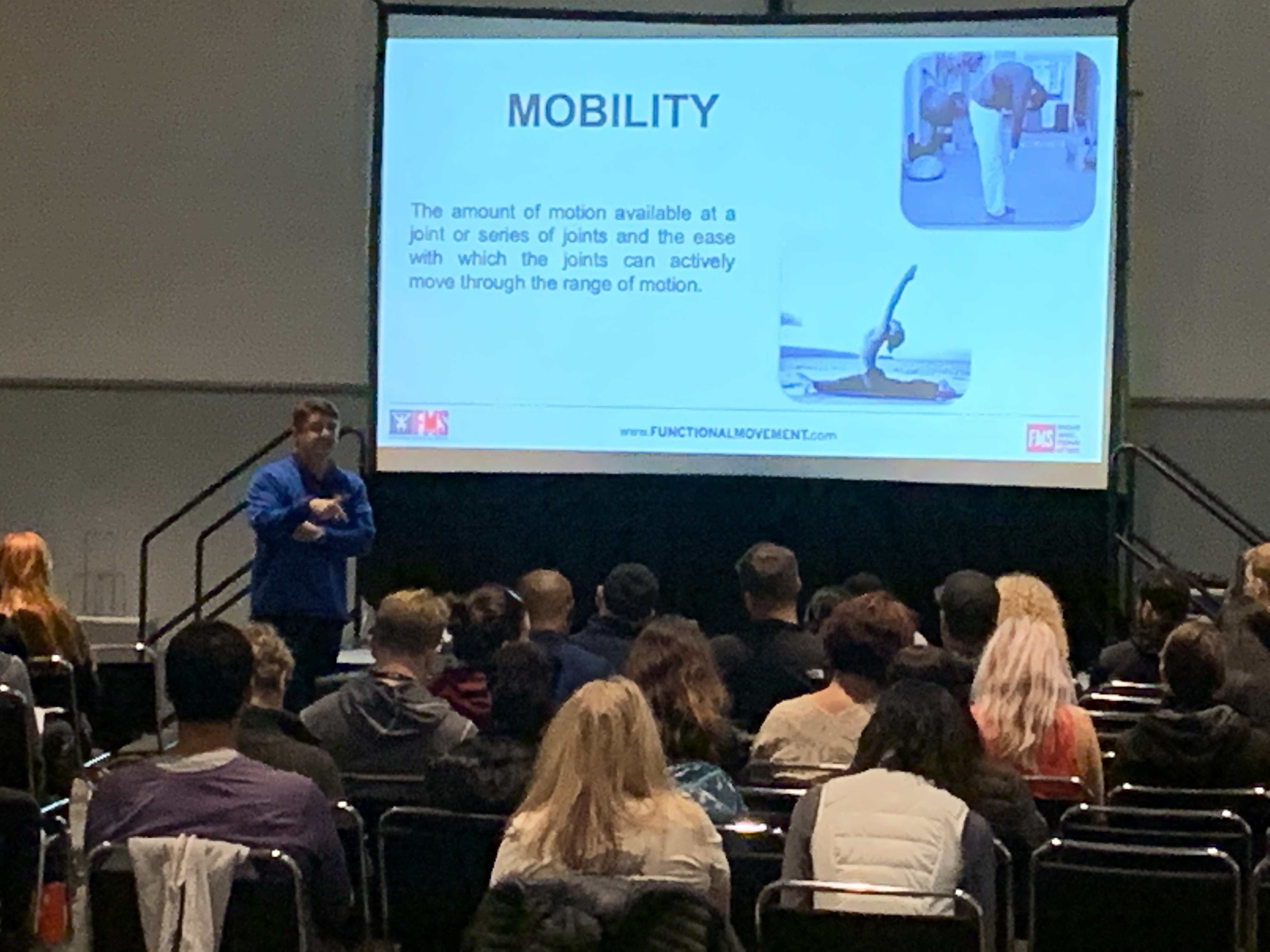
The big difference with mobility is that YOU control the movement rather than you or something helping you through a range of motion. The picture you see is not only Lee explaining these concepts but also showing extremes of not having enough and having too much. I thought it was especially interesting that Lee said in his experience that it is actually more difficult to help those that have too much mobility (hyper mobility is a real thing) and I have to agree, but that’s a whole different post.
If you have heard the FMS guys talk before you often hear them say have mobility then stability. For a long time I have to admit I misunderstood them as well. What Lee clarified was how a lack of mobility can be the result of a stability issue. This is obviously a concept of mobility training that we have been discussing for years in DVRT. So, the answer to better mobility training would be through a stability training exercise. What is stability though (most people misunderstand stability and mobility all the time)?
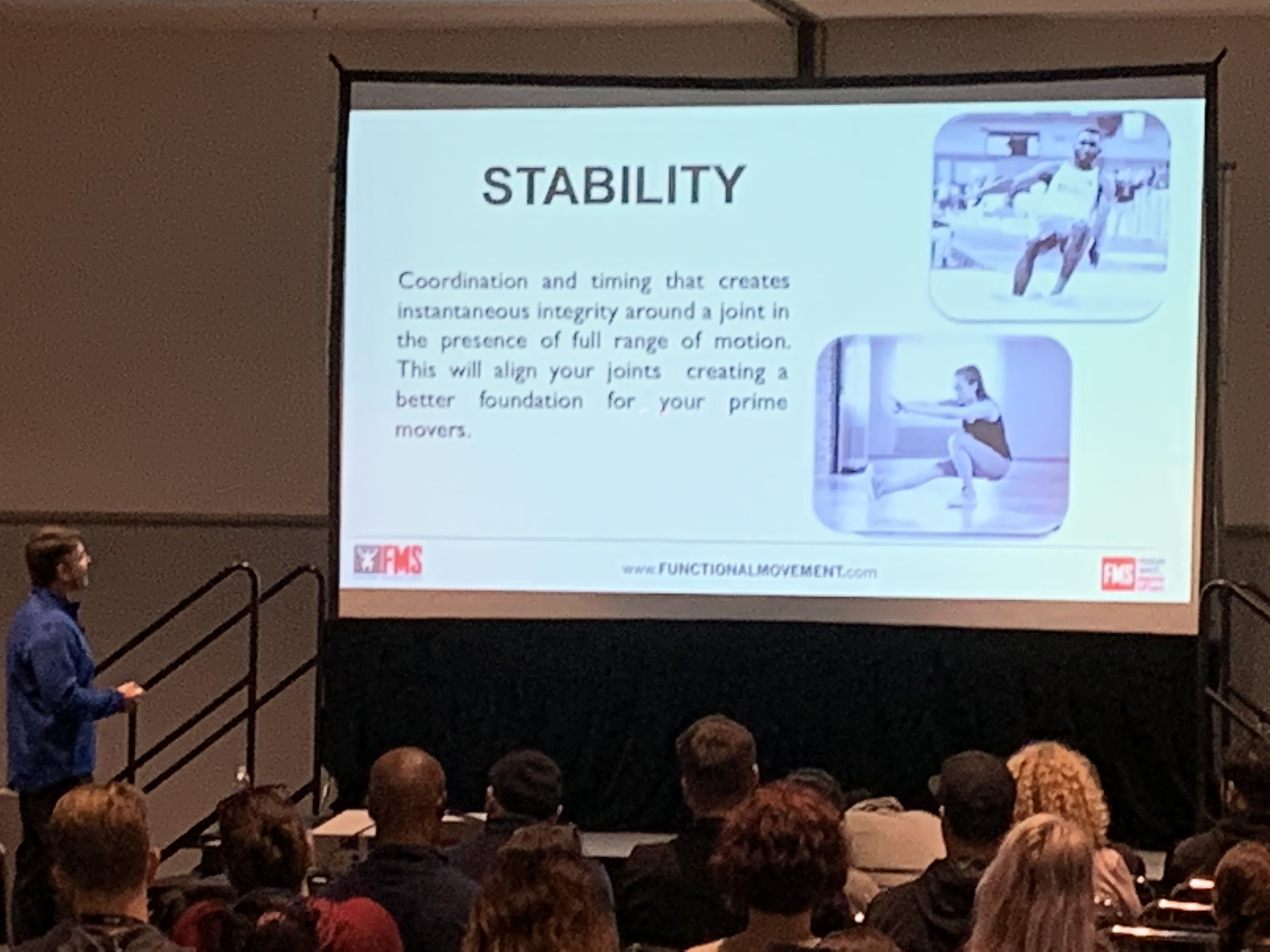
If you see how Lee defines stability you see that it has nothing to do with how much you shake or how unbalanced you are. It relates to this idea of motor control. Shoot, now what is motor control you might be thinking?
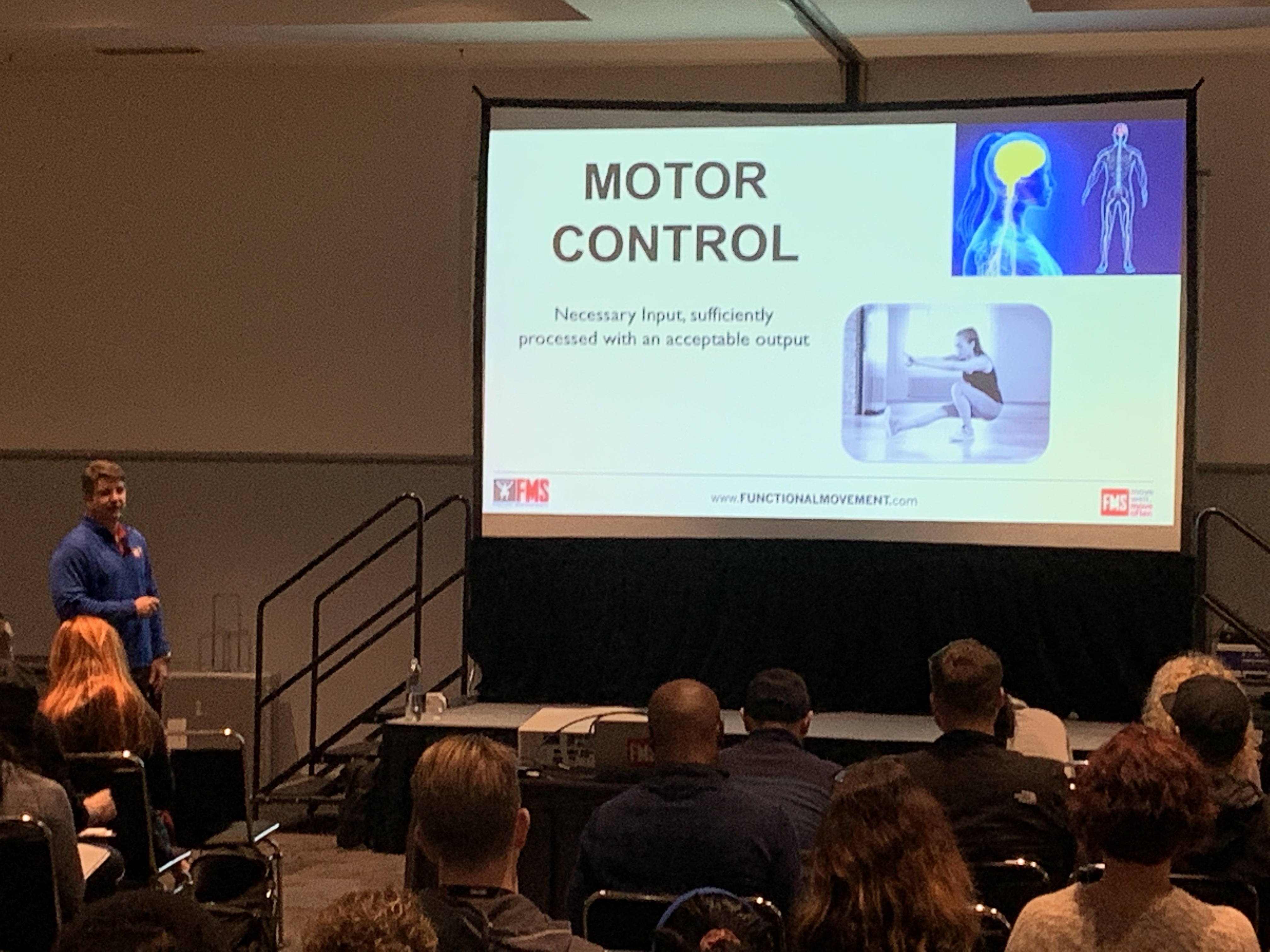
Huh, you may be thinking. Without going into too much of what Lee said, I find Dr. Brandon Marcello has a great way of putting it…

If your head is hurting a bit right now, that is understandable. Hopefully you are at least taking away that we use terms incorrectly and without the right purpose all the time. Gaining a better understanding helps us see what makes for a good exercise and method and what doesn’t. In our discussion today, these all matter in understanding where so many people are going wrong with their mobility training. So, let’s hit on the 2 BIGGEST mobility training mistakes.
Isolating a Joint
When we think about mobility we can discuss it in regards to a movement (like do you have good squat mobility) or a joint (do you have good hip mobility). A lot of people automatically assume that if you improve joint mobility that relates to better movement mobility. A lot of the research doesn’t show this to be the case, as a movement actually has its own coordination and relationship with the nervous system that requires specific patterning.
For example, I would have female clients come in that could demonstrate amazing lower body isolated mobility. However, their squats weren’t good. What gives? If you don’t realize the difference then it is hard to make the right impact. Yet, these goes even further.
Even if we want to make the argument that isolated joint mobility translates to better movement (I like to say it can give us a better opportunity to build movement) there is still an issue. Let’s take an example from this weekend’s conference. A woman came up and asked me how to improve her clients’ thoracic mobility. She was asking about all these “thoracic mobility” drills. I stopped her to ask her, “why do your clients have a tight thoracic spine?” Her response was, “because they have bad posture”. Okay, I tried to help her see the issue, “why do they have bad posture?” Seeing she wasn’t understanding my point I went back to the idea of the “Joint by Joint Approach”

You see the thoracic spine responds to what happens above it (cervical spine) and below (lumbar spine and lower). If we have people that either don’t move a lot, are weak, or haven’t trained proper core stability, the next joint, the thoracic spine, tries to create stability. How does it do that? Often through creating “tightness”.
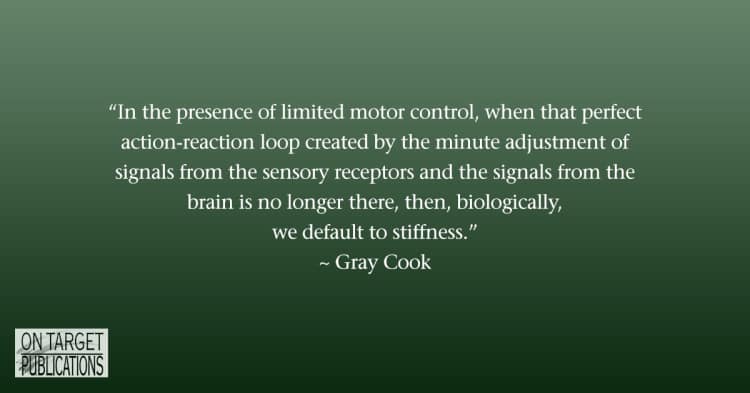
This means you can try to do all the thoracic mobility in the world, but if you have neck, core stability, and/or lower leg and foot issues, that is all going to come back. That is why in DVRT we take a much more integrated approach to addressing such issues.
You see DVRT Master, Joel Gunterman and Martin Adame break down why such an odd looking drill helps improve thoracic mobility training so much. We are challenging our core stability and lower body integration in order to give the thoracic spine “permission” by the nervous system to increase their movement. Trying to isolate such areas are a demonstration in futility.
The RIGHT Tension
I almost want to make this a whole post in of itself;) People have learned about the law of irradiation. That law tells us that if we create tension at a distal point (i.e. hands or feet) it creates a chain reaction of associated muscles also creating tension. My classic example is putting your arm out from your chest and squeezing into a fist like you see below.

When you do so you should feel it go into your shoulder, your lats, and your core. That tension actually helps create stability which when we combine with movement results in the nervous system allowing the joints to move better because the body doesn’t feel unstable.
Great concept right? Well, here is the thing, you just can’t create any tension in order to use this to help your mobility training. If I do the same thing, but hold my arm like you see below I don’t feel ANY of that connection that I did in the above scenario. So, joint angles matter, knowing how to position the body to create the RIGHT connections is really important.

Here is an example of where people misuse this concept. You see a lot of people holding medicine balls now and trying to move their body to gain better mobility. They are trying to use this law of tension but the medicine ball doesn’t allow them to put the joints in the right position. You see the way you have to hold the medicine ball causes the arms to be in a position where they can not connect to the core and provide the stability that allow for better mobility.
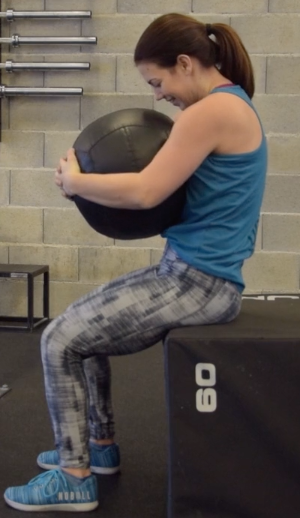
Whereas a “weird” looking exercise like our Front Load MAX deadlift like Martin shows is a MUCH better way of doing the same idea. Holding the USB in the right position and creating tension against it as we teach (elbows in, pulling the bag apart) we get that lat/core connection. So, tension just for tension sake does NOT work! You have to be far more specific about how you position the body when you create such tension.
Of course one of the biggest questions I get is, “will this last?” As Lee explained, lifestyle plays a big part. If we watch how much we sit, how we sleep, even our nutrition, then the answer will become yes. These types of mobility training drills work so well because they combine all the proper elements of mobility and stability. They cement patterns in our body and teach our body how not to rely on compensating because we don’t know how to move. That is what makes DVRT create “magic” which is just science we bring to life!
Find out more of how we help people learn how to create powerful changes in fast! Save 25% on our DVRT Online Courses with code “dvrt25” HERE for a limited time!
© 2024 Ultimate Sandbag Training. Site by Jennifer Web Design.






